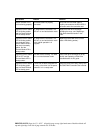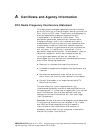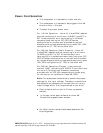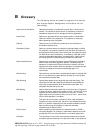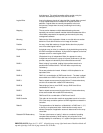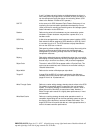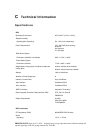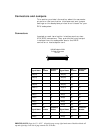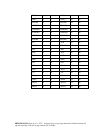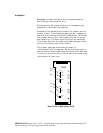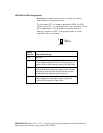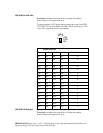
PRINTER NOTE: Page size 9” x 9.25”. Align this page to top, right hand corner. Back box bleeds off
top and right edge. Left side of page extends to 9.25 inches.
3 and 5, all data and parity blocks are divided between the drives in
such a way that if any single drive is removed (or fails), the data on it
can be reconstructed using the data on the remaining drives. (XOR
refers to the Boolean “Exclusive-OR” operator.)
SAF-TE Is the acronym for SCSI Accessed Fault-Tolerant Enclosures. It is a
monitoring and communication specification developed by Conner
(
n
Stor) and Intel for sending and receiving server and storage system
status information via the SCSI bus.
Session Refers to the period of time between any two consecutive system
shutdowns. System shutdown may be either a power off/on, or a
hardware reset.
SCSI Drive A disk drive equipped with a small computer system interface (SCSI).
Each disk drive will be assigned a SCSI address (or SCSI ID), which
is a number from 0 to 15. The SCSI address uniquely identifies the
drive on the SCSI bus or channel.
Spanning Disk spanning allows multiple disk drives to function like one big drive.
Spanning overcomes lack of disk space and simplifies storage
management by combining existing resources or adding relatively
inexpensive resources.
Striping Disk striping writes data across multiple disks rather than on one disk.
disk striping involves partitioning each drive storage space into stripes
that can vary in size from one sector (1 KB) to several megabytes.
Stripe Order The order in which SCSI Drives appear within a Physical Pack. This
order must be maintained, and is critical to the controller’s ability to
“Rebuild” failed drives.
Stripe Width Refers to the number of kilobytes per stripe block.
Target ID A target ID is the SCSI ID of a device attached to the disk array
controller. Each SCSI channel can have up to sixteen SCSI devices
(target ID from 0 to 15) attached to it.
Write-Through Cache Refers to a cache writing strategy whereby data is written to the SCSI
Drive before a completion status is returned to the host operating
system. This caching strategy is considered more “secure,” since a
power failure will be less likely to cause loss of data. However, a
Write-Through cache results in a slightly lower performance, in most
environments.
Write-Back Cache Refers to a caching strategy whereby write operations result in a
completion signal being sent to the host operating system as soon as
the cache (not the disk drive) receives the data to be written. The
target SCSI Drive will receive that data at a more appropriate time, in
order to increase controller performance.



